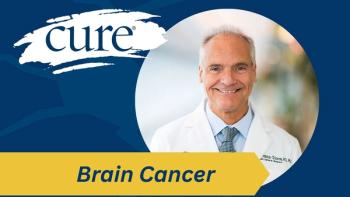
FDA to Review Inavolisib Combo for HR-Positive, HER2-Negative Breast Cancer
The Food and Drug Administration granted a breakthrough therapy designation to inavolisib plus Ibrance and fulvestrant for HR-positive, HER2-negative locally advanced or metastatic breast cancer.
The Food and Drug Administration (FDA) granted a breakthrough therapy designation to the novel drug inavolisib to be used in combination with Ibrance (palbociclib) and fulvestrant to treat patients with PIK3CA-mutant, hormone receptor (HR)-positive, HER2-negative locally advanced or metastatic breast cancer that recurred (came back) on or within 12 months of postsurgical endocrine treatment.
Roche, the manufacturer of inavolisib, announced the FDA’s decision in a recent press release.
“This promising inavolisib-based regimen could transform the PI3K inhibitor class, potentially becoming the standard of care for this patient population in the first-line setting,” Dr. Levi Garraway said in the release.
According to the FDA, breakthrough therapy designations are granted with the goal of speeding up the development and review of drugs that treat a serious condition. In order for a drug to receive the designation, trial results must show that it could potentially offer an improvement over currently available therapy.
The breakthrough therapy designation is based on findings from the phase 3 INAVO120 trial. According to ClinicaTrials.gov, the INAVO120 trial included 325 patients who were randomly assigned to receive either inavolisib plus Ibrance and fulvestrant or a placebo (inactive drug) plus Ibrance and fulvestrant. The main goal of the trial was to determine if the inavolisib-containing regimen led to improved progression-free survival (PFS), which is the time from the start of the study that patients live without their disease worsening.
Findings showed that the median PFS was 15 months in the inavolisib group, compared to 7.3 months in the placebo group. This equates to a 57% decrease in the risk of progression or death, according to the press release.
Researchers on the study also plan on observing overall survival (OS), which is the time patients live before death of any cause. While OS data are not yet ready at this point, it was mentioned in the press release that a positive trend has been observed in the inavolisib group.
Inavolisib is an oral drug that works by blocking the PI3K protein, which is needed for cell growth, according to the National Cancer Institute. Specifically, it targets the PI3K alpha isoform (a variant of the protein). According to the release, this may “help minimize the overall burden and toxicity of treatment.”
In 2019, the
In the trial, nearly one-third (32.7%) of patients experienced grade 3 or higher (moderate to severe) high blood sugar, also known as hyperglycemia. A later
Comparatively, according to findings from INAVO120, the rate of grade 3 or 4 (severe to life threatening) hyperglycemia was 5.6% in patients treated with inavolisib. Other common grade 3 to 4 side effects observed were neutropenia (decrease in a type of white blood cell called neutrophills), anemia (decrease in red blood cells), thrombocytopenia (decrease in thrombocytes, which are also a type of white blood cell) and inflammation of the mouth and lips.
For more news on cancer updates, research and education, don’t forget to




